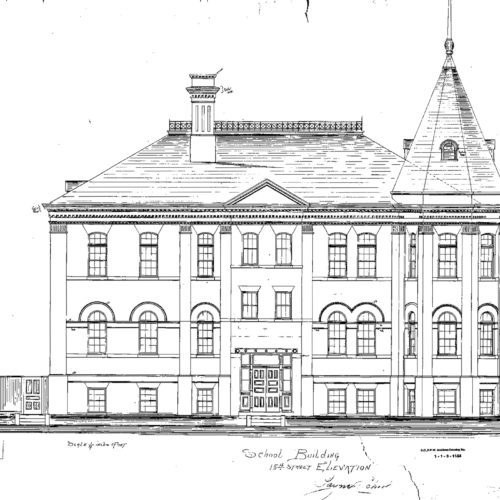The original Payne Elementary School was built in 1896 to serve Black students. At that time, Washington, DC schools were segregated by race. As the city grew, many of the Black schools became overcrowded and fell into disrepair, while nearby white schools were renovated and operated under capacity.
In the late 1940s, parents of Payne Elementary students joined other working-class Black parents living east of the Anacostia River to speak out about the deplorable conditions of their aging schools. They led a series of protests, during which they kept their children home from school. Their activism contributed to the landmark 1954 court case Bolling vs Sharpe that ended DC school segregation.
The DC School Board finally recognized the need for structural changes to Payne Elementary. In the 1950s and 1960s, several ideas were attempted to relieve overcrowding such as placing kindergarten students on a 4-day schedule and “borrowing” a floor from a nearby school. They also tried establishing portable units (trailers), which finally led to the creation of permanent annexes to the existing building. In 1983, a fire broke out destroying the original building, but the annexes remained undamaged and students moved into these buildings permanently.
The building structure remained unchanged until a 2014 modernization transformed the facility into a modern learning environment. Over two consecutive summers, every instructional, administration, and auxiliary space was renovated. Information technology systems were added to every classroom, including specialized systems for students in Payne’s Deaf and Hard of Hearing program. Finally, the construction of a new walkway and an elevator made the school accessible to individuals with physical disabilities.












 Nat Turner leads his fellow slaves in a revolt in Southampton County, Virginia. In August 1831, Turner and his rebels kill nearly 60 people, most of whom are white slave owners. The rebels free the slaves. Nat Turner is eventually caught and executed.
Nat Turner leads his fellow slaves in a revolt in Southampton County, Virginia. In August 1831, Turner and his rebels kill nearly 60 people, most of whom are white slave owners. The rebels free the slaves. Nat Turner is eventually caught and executed. Daniel A. Payne is ordained the first black minister in the Lutheran Church in Fordsboro, New York. A few years later, he leaves the Lutheran Church and joins the African Methodist Episcopal.
Daniel A. Payne is ordained the first black minister in the Lutheran Church in Fordsboro, New York. A few years later, he leaves the Lutheran Church and joins the African Methodist Episcopal.

 Bishop Daniel Alexander Payne dies in Xenia, Ohio on November 2, 1893. He is buried in Laurel Cemetery in Johnsville, Maryland.
Bishop Daniel Alexander Payne dies in Xenia, Ohio on November 2, 1893. He is buried in Laurel Cemetery in Johnsville, Maryland.